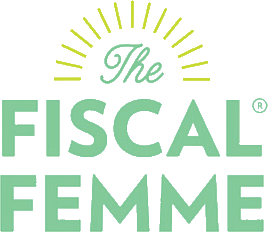Originally posted on Ellevate.
5 Things You Need to Know About Your 401-K or IRA
We know it’s important to invest in our retirement and we know it’s important to start early so that compound interest can work its magic. Unfortunately, that’s not enough to feel confident in the choices we are making about our 401-K or IRA.
Choosing investments, deciding how much to contribute and all the jargon in between can be enough to have us avoid doing anything at all. Luckily, just like with many things in our financial lives, it’s so much more important to get started than to do it perfectly and it can be a whole lot more simple than you might think.
Here are five things everyone should know about their 401-K or IRA.
It won’t hurt as bad as you think.
When we decide how much to contribute to our 401-K, there are many considerations. You may wonder, “how much should I contribute, how much can I afford to contribute and how will this affect my day to day lifestyle?” Great questions!
While reaching our retirement goals might sound pretty daunting, it’s much more important to start contributing than to contribute the ideal amount. Start small and increase your contribution by 1% every few paychecks. A 1% increase doesn’t sound like much but if you continue to do that month by month, next thing you know, you’ll be maxing it out! The best part is, you will hardly notice a 1% decrease in your paycheck.
401-K match is free money (or feels like it!).
Many companies offer 401-K matching as a benefit to employees. This means they will match your contributions dollar for dollar up to a certain percentage or dollar amount. For example, if your company offers 3% 401-K matching, they will contribute an additional 3% to your 401-K when you contribute at least 3%.
It feels like free money but it’s really part of your overall compensation. Don’t leave money on the table. Make sure to max out your company’s 401-K match. Let your company help you reach your retirement goals more quickly and easily.
Understand what you are paying in fees.
Fees in a 401-K or IRA can be very confusing. First, check if you are being charged any annual or quarterly fees just for having an open account. Then, check the fees associated with the various investments in your plan. If you aren’t sure what your options are, ask an HR or benefits professional to send you your options.
Then, search the materials (or Google) for the “expense ratio” for each of the investments. An expense ratio of 2% might not sound significant but think about it as 2% that’s coming directly from your earnings. For example, if you earn a 6% profit on your 401-K and 2% of that goes towards expenses, you only get to keep 4% of that profit. While you can’t eliminate these type of expenses completely, you can choose options that minimize them.
Also look out for other fees associated with your investment options, such as load and redemption fees that can also eat into your earnings.
There are major penalties to withdrawing money early.
We often think of our retirement savings as earmarked for the future, but when we switch jobs or leave our current company, we are given the option to cash out. While getting a lump sum in cash might sound pretty appealing, what’s much less appealing is what you will have to pay in taxes and fees.
Cashing out can leave you with as little as half of the money in your account. Why? When you cash out your 401-K you have to pay taxes on your total contributions and all of the earnings your contributions have made thus far. You also have to pay an early withdrawal penalty fee.
Not to mention, all the money you are missing out on in future growth! Long story short, if at all possible, avoid cashing out of your retirement accounts. You will also have the option to leave the account where it is or to roll it over to an IRA or your new 401-K plan.
Rolling old 401-Ks over is easy.
I find that many people have retirement accounts all over the place. We switch jobs a couple of times and leave accounts where they are because it seems confusing and daunting to rollover everything to one place. Guess what? Rolling over your 401-K into an IRA is actually pretty darn easy.
Once you choose where you’d like to put it, call the brokerage company up and tell them you are looking to rollover your 401-K. They are typically very happy to help you rollover your account free of charge. Just have your current account information handy and stay on the line.


